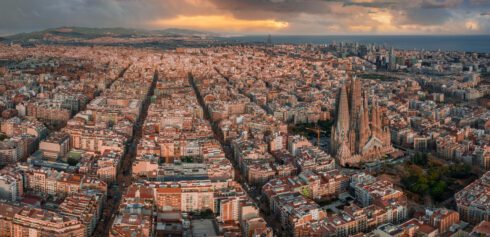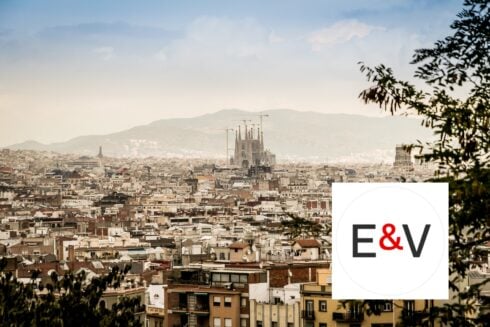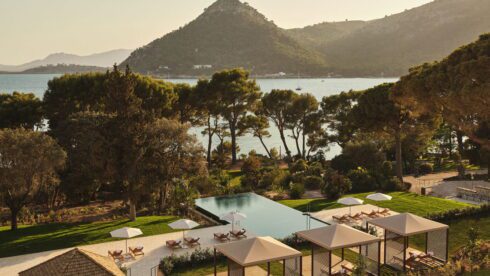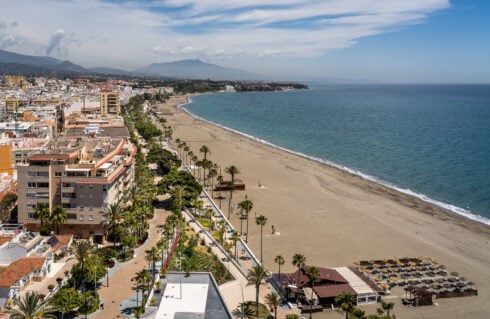ALMOST 10 years ago I wrote an article comparing the cities of Malaga and Barcelona.
“Is Malaga the new Barcelona?” I asked in my regular article in the Olive Press.
So popular was it online, it sparked an incredible craze of copycat articles, with even the likes of Daily Mail jumping on the bandwagon.
If you Google it you will see multiple articles, including my own, hopefully right at the top.
I was thinking about this comparison recently and wondering what, if anything, had changed about the two cities in terms of what I’d compared back then.
READ MORE:
- Real estate regulations in Dubai should serve as a model for Spain, writes property expert ADAM NEALE
- Housing and tourism crises are changing Spain’s property market with bans on short term lets increasingly likely, writes expert ADAM NEALE

The weather remains fundamentally the same – albeit a little bit hotter and with rainfall heavier and more infrequent – while Malaga still has 300 EXTRA hours of sunshine than Barcelona each year.
To add to the Catalan capital’s gloom, Lionel Messi no longer plays for the local team, although I think Lamine Yamal more than makes up for it… and Malaga FC haven’t exactly set the world alight.
Population surge
The population of both cities has grown, it turns out.
Barcelona now has the highest population it’s had since 1991, with 1.7 million people, some 25% of them foreign born.
Malaga meanwhile has grown from 560,000 to 587,000 residents with 16.7% being foreign.
It means though, that Malaga has grown a little more quickly than Barcelona. By 4.82% vs 3.44%. Although, at the provincial level, Barcelona continues to grow a little more quickly and Malaga is the fifth province in Spain in terms of population growth.
Malaga will have an expected population growth of 20% over the next 15 years. Almost all of that will come from the arrival of foreign-born arrivals, which will make up 33% of the province’s population by 2039.
Metropolitan
Barcelona had a much more developed metro system 10 years ago with eight lines and 165 stations, while Malaga had only two lines and 10 stations.
Today, while Malaga still has two lines, it has two more planned and no less than 19 stations.
Not too shabby an improvement but still dwarfed by Barcelona’s, which has grown from eight lines and 165 stations to 12 lines and 189 stations.
Economy
In terms of economic growth, both Barcelona and Malaga rely heavily on tourism.
As a result of the post-Covid surge in tourism, which continues apace, Malaga saw its economy grow by 3.6% in 2023, while that of Barcelona grew by a still-healthy 2.9%.
The one unfortunate way in which Malaga is becoming more like Barcelona is in terms of cost of living. Back in 2015, Expatistan.com claimed Malaga was 24% cheaper than Barca, but today is just 7% cheaper.
Another site Numbeo disagrees, claiming the cost of living (including rent) is 21.1% higher in Barcelona than Malaga.
Breaking that down to a monthly amount, Numbeo says that you would need €4,602 in Barcelona to maintain the same standard of living that €3,800 would bring you in Malaga. That’s a substantial difference.
Property
That difference extends to property prices as well. When I wrote the original article, Spain was just beginning to emerge from a massive property crisis, which saw huge drops in property prices from their 2007 peaks.
The numbers for 2014 showed property in Barcelona cost €3,188 per metre square.
For Malaga, the price was half of that at €1,559.
So what a difference a decade makes.
To buy property in Barcelona today, the third highest property prices in the country, you can expect to pay €4,430/m2.
The average price in Malaga is now €3,016/m2.
That’s a 93% increase in Malaga’s property prices and a 39% increase in Barcelona.
Seeing that dramatic increase, one can understand why people who live in Malaga are frustrated with the housing situation and why it tops the charts of most important local concerns.
Conclusion
Malaga remains a cheaper option than Barcelona. It is just as beautiful and probably a cleaner city with more beaches than Barcelona and a growing and vibrant cultural scene.
Click here to read more Adam Neale: Property Insider News from The Olive Press.








